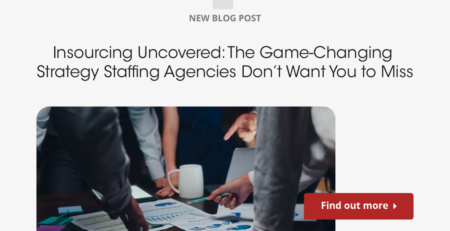What Is Psychological Safety In The Workplace?
The thought of being degraded or frowned upon when they share their belief or idea is one fear that many employees harbor. This might lead to reduced participation in roles that may require them to air their opinions to other employees within the company.
Workplace psychological safety solves this problem by creating a safe space for employees to share their beliefs without being judged. With this safety plan in place, activities are inclusive for all employees.
Psychological safety is an important part of any organization. Below, we have compiled all you need to know about psychological safety and why it is crucial for any organization.
What Is Psychological Safety?
Employee workplace safety has grown to become a significant concern for many companies. This safety concern involved the provision of a safe environment to ensure workers’ health and safety while they carry on their duties within the organization.
In the past, safety for employees meant providing safety equipment to reduce or eliminate the risks of accidents at work. However, safety now is an all-encompassing word that covers physical and employee mental health. This led to the implementation of several policies, one of which is psychological safety.
Psychological safety is a provision of freedom of expression at work. It is the belief that employees should not be punished or humiliated for speaking up about their ideas, questions, concerns, or mistakes.
A workplace is usually made up of employees of various demographics. These employees have different ages, religions, work experiences, beliefs, and ideologies. In an area such as this one, almost every employee agrees with each other’s ideas. While this is allowed, psychological safety makes employees comfortable bringing their authentic thoughts to work.
The concept of psychological safety was first introduced by a Harvard organizational behavioral scientist named Amy Edmondson. It was introduced as “team psychological safety” and was officially defined as “a shared belief held by team members that the team is safe for interpersonal risk-taking.”
However, way before Edmondson defined the term in 1999, psychological safety had been a matter of discussion. Psychological safety as a concept was first explored in the 1960s.
In 1965, MIT professors Edgar Schein and Warren Bennis argued that psychological safety was integral for making people feel secure. They not only described it as an integral element for reducing interpersonal risk but also a way for people to overcome defensiveness or learning anxiety.
Today, psychological safety is the belief that a team member should not be embarrassed, rejected, or punished for sharing opinions, taking risks, or asking for feedback. Essentially, psychological safety at work means:
- The workplace is a safe place to learn without bias
- The workplace is a safe place to contribute without bias
- The workplace is an environment where all employees feel and is included
- Employees can challenge the status quo safely without the fear of being judged.

Importance Of Psychological Safety
For organizations, psychological safety might be the key to unlocking employee potential. With the safety that comes with airing their opinions and thoughts when it matters, employees can now feel seen and heard. This encourages them (the employees) to continue being comfortable with speaking up, sharing their perspectives, and raising concerns.
According to a 2019 poll, only 30 percent out of 100 percent of employees feel that their opinions count at work. That means about 70 percent of employees do not share their thoughts or how to improve certain projects because they fear they are not being listened to.
This fear might also extend to employees that perceive themselves as the minority or a lower social class of the organization. For example, women in men-dominated organizations often fear speaking up to avoid being overlooked.
According to a “diversity and inclusion” report on gender equality in tech, nearly two-thirds (62%) of U.S. women in tech say they’ve had their ideas ignored in meetings until a man repeats them. Although psychological safety might not eliminate discrimination in this case, it mitigates the microaggressions that women face, ensuring that their opinions as team members are heard, and they are awarded respect.
But is there any advantage or benefit of adopting a psychologically safe workplace culture?
A psychologically safe environment boasts of healthy employees and healthy employee relationships. Below are some of the importance of psychological safety at work:
- Increased Engagement: When employees feel psychologically safe, they find it easier to be productive. They are unafraid to ask questions, solve problems, or hold discussions. This makes it easier for them to take on active organizational roles.
- Fosters Inclusion Culture: Inclusion culture embraces diversity in the workplace. This means regardless of gender, age, religion, culture, age, belief, political stance, or experience, every employee feels included, connected, and like a part of the organization. This is only possible when employees are not constantly scared of being judged.
- Encourages Innovative Ideas: What happens when employees are not afraid to make suggestions? It becomes easier to unveil novel ideas! Regardless of how wild or unlikely their idea sounds, employees are not afraid to express their ideas in a psychologically safe workplace. This reduces the chance of missing out on a good idea simply because an employee fears backlash.
- Improved Well-being: When employees feel psychologically safe, they are less stressed. Psychological safety promotes great mental health and makes it easier to avoid stressors usually present at work.
- Reduced Turnover: Employees are likelier to stay with an organization if they feel safe and included. A psychologically safe workplace experiences low employee turnover and high retention. This eliminates the high costs of interviewing, hiring, and training new employees, a problem that is not sustainable for any organization.
- Create Brand Ambassadors: Employees are more likely to brag about their work when it offers the level of safety they seek. They are not only going to be happy but also proud to be proud of the organization. They are going to be so proud that they will undoubtedly sing its praises outside. This will help the organization build a good reputation which (potential) customers and shareholders will note.
- Boosted Team Performance: Team members feel safe with one another in a psychologically safe environment. They are highly engaged, always offering new ideas, solving problems, asking important questions, and giving equally important answers. This leads to an increase in team performance.
Stages Of Psychological Safety
Psychological safety is split into four stages which are inclusion safety, learner safety, contributor safety (safety to contribute), and challenger safety (safe to challenge the status quo). Each stage varies in intensity, with the employee being fully psychologically safe in their work in the final stage.
The stages of psychological safety are useful metrics to judge how much work needs to be done to help employees feel safe. These stages can be used to measure the effectiveness of an organization’s psychological safety culture. Below are the stages of psychological safety and what they mean for the employee.
- Inclusion Safety
Psychological safety starts with being accepted as part of a team and organization. In this stage, an employee is granted a shared identity and is adopted as a new member of the social collective. Inclusion safety is not tolerance of a person but a genuine acceptance and respect for the fact that they are now a group member.
- Learner Safety
After inclusion comes learner safety. Learner safety means team members are not afraid to learn. This means that members can readily ask questions without fear or worry of being judged or discriminated against.
In the learner safety stage, employees can ask each other questions, try new things, and even make mistakes as they do so. They actively and unapologetically pursue new knowledge, which many employees find difficult to do in the inclusion safety stage.
- Contributor Safety
In the contributor safety stage, the employee’s constraints begin to fall off little by little as they assume a more active role than in the previous stage. In this stage, employees begin to use their skills to contribute to their job. They now have responsibilities as they have shown themselves competent in their role.
Employees in the contributor safety stage make valuable contributions to their group. They offer ideas and opinions, and they do this without fear.
- Challenger Safety
This is the last stage of psychological safety and the final hurdle employees must clear before they are assumed to have full psychological safety. In the challenger safety stage, employees are unafraid to challenge opinions, ideas, or the status quo. They are equally unafraid to pitch ideas without fearing punishment from their executives/managers or discrimination from their colleagues.
Challenger safety is the stage of Psychological safety that is the license to innovate, as it enables organizations to unlock employee innovation. It is the stage at which employees can reach true innovation.

Steps To Creating More Psychological Safety At Work
For psychological safety to take root in an organization, it needs to be prompted by leaders. By adopting several practices into the organization’s corporate culture, leaders can encourage psychological safety among employees. Some steps leaders can take to make a company feel more safe include:
1. Make Psychological Safety A Priority
Leaders should continuously iterate the importance and necessity of psychological safety in the organization. They should continue to brief team members about creating a psychologically safe environment for themselves and their colleagues. Leaders should help employees see that the essence of psychological safety in the company is connected to a higher purpose which is organizational innovation, better team engagement, better productivity, and an inclusive company.
Additionally, leaders should encourage employees to seek help when necessary and be willing to offer help when they do. Leaders should also ask for help when necessary and remember to model the behaviors they want to see in their employees.
2. Encourage Speaking Up
Leaders should facilitate speaking up among employees by displaying genuine curiosity and empathy towards workers. They should be open-minded, willing to hold conversations when necessary, honest, and frank without being blunt, and encourage employees to debate certain policies. This will help foster a culture of not being afraid to speak up and challenge the status quo when necessary.
3. Establish Norms On How To Handle Failure
Many employees are afraid to risk failing at an activity due to the fear of being punished. However, this fear discourages reasonable risk-taking, which is necessary to realize innovative ideas.
Mistakes give space for growth. As a leader, it is important to encourage workers to learn from failure and disappointment. Be open about talking about past mistakes, how they affected the organization, and what you (the leader) learned from those mistakes.
Establish a norm on how failure is handled to encourage innovation and teach employees not douch their ideas in self-doubt. Additionally, remember to express disappointment and appreciation as and when necessary.
4. Pave The Way For Ideas
As a leader trying to make an organization more psychologically safe for employees, it is important always to embrace new and wild ideas. Throw challenges at employees, ask them what they think, and encourage them to be more open about their opinions and ideas.
Accept and be willing to try out highly creative ideas even if they sound almost impossible or have not been rigorously tested. Even if the plan or idea has not been thoroughly thought out or formulated, it is essential to give it a chance and be supportive. However, remember to ask tough questions while fostering innovative mindsets.
5. Encourage Constructive Debate
Many leaders are quick to shut down debates for fear of them getting out of hand. However, a psychologically safe environment is not one where the employees do not debate opinions but one where they can do so healthily. This will teach employees to handle emotions and decision-making in the office better.
Leaders should encourage sincere and constructive dialogues where employees challenge each other’s opinions concerning a certain subject. That will encourage employees to resolve conflicts productively without resentment or animosity.
As a leader trying to create a psychologically safe workplace, facilitate and hasten a healthy and safe environment by setting the stage for sincere dialogue on how to debate conflicting opinions as team members. Some good leading questions to do this are “what are our norms on how to manage differences in opinions” and “how can we as individual team members communicate our concerns about a failing process?”.
6. Look For Safety Patterns
Instead of focusing on the collective level of employee psychological safety, assess individual employee patterns. Note employees who experience less psychological safety than their colleagues and those who display a significant amount of psychological safety.
Encourage and advocate for the level of psychological safety in all employees. Go back to the drawing board to determine how to enhance team and individual psychological safety. Do this while taking individual employee psychological safety needs into perspective.
7. Promote Dialogue
Although we previously mentioned the act of promoting employees to speak up, promoting dialogue is another to create a psychologically safe workplace. Leaders should hold meaningful conversations with workers to truly understand their beliefs and values. This, along with active listening, will build trust between leaders and employees.
Encourage employees to hold quality conversations and share respectful but constructive feedback on what they think about their conversations with one another.
Leaders may also invest in these quality conversations by paving the way for these conversations to take hold. They should do these by holding events or seminars where employees can share previously unspoken reservations about an opinion and offer solutions where necessary.
8. Celebrate Wins
Always appreciate every win from every employee, regardless of how small that win is. Share credit and applaud success. Remember that no win to the organization is won by the organization itself but by the effort of the employees. Do not only celebrate wins but also create a culture of appreciation by encouraging employees to congratulate any small win.
Create A Psychologically Safe Workplace
Psychological safety creates a healthy and safe environment for employees to reach their true potential. This, among many other reasons, explains why psychological safety should be a priority in any organization.
In an age where employees now prioritize their mental health, providing psychological safety is a solution to show employees that you care about them. By implementing psychological safety in the organization, you can create a sense of community in the workplace and make every employee feel valued.
In today’s competitive market, finding the right creative and marketing expert can be a challenge. But with icreatives, you’re in experienced hands. With 37 years in staffing and a track record of matching more than 10,000 employees to over 1,000 companies worldwide, we know how to connect you with the best. Plus, you only pay if you hire—there’s no risk, only results.
Ready to find your perfect creative or marketing expert? HIRE WITH ICREATIVES today!












